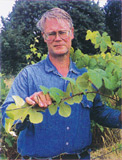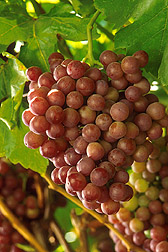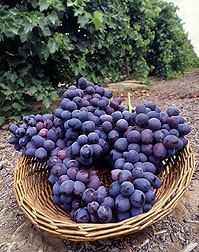 Every man his vine, every man his fig tree
Every man his vine, every man his fig tree
Sounds idyllic, but while figs aren’t hard to grow in Florida, it takes a bit more planning and work to grow grapes in a Florida-type climate. It CAN be done, though you’d better do your homework before you plant or you’ll be in for disappointment and a lot of work. Over the next several columns I’ll cover the basics of what you will have to deal with and what you can grow, depending on how much work you want to put into your grapes.
The first big obstacle to growing grapes in Florida, or any warm, humid part of the U.S., is disease.
The southeastern U.S. is where all the major fungal diseases of grapes originated, including black rot, downy mildew, powdery mildew, anthracnose, several kinds of blights and fruit rots, and more. Those diseases are bad enough in the summers of northern areas, such as New York, but in the hot, humid climate of the southeast, they start earlier, reproduce faster, and have many more months to do their work. Even so, these diseases only stunt and damage vines and destroy the crop, and then only if untreated. Much more serious is the bacterial pest Pierce’s Disease, which can kill vines altogether.
Pierce’s Disease (PD for short) is a bacterial disease. Instead of attacking the outside of the vine, the way the fungal diseases do, it gets into the vine where it reproduces at a rate that clogs the vascular system of the vine, making it wilt and die, sometimes within a few days. Severely affected vines will look like they were hit with a blowtorch, while vines with resistance may not even show any obvious symptoms. In between are such things as slowed growth of the vine, scorching of the leaf margins, and death of some shoots. The important factor in PD is that, while the fungal diseases spread by themselves, PD has to be spread by a carrier, usually sucking insects such as leafhoppers. This gives one of the means to stop the spread of PD, by stopping the leafhoppers that carry it. Not an easy task in a climate where the leafhoppers can have three or more generations a season, each larger than the last.
These pests are the main reason that unwary home growers who buy vines of table grape varieties like Flame Seedless or wine grapes such as Chardonnay and other types of the old world grape Vitis vinifera soon find they made a serious mistake. Plant Vitis vinifera outdoors without a lot of pest control and it will be a rare vine that survives its first year. In this case, a lot can mean spray or other disease control applied as much as three times a week.
American grapes such as Concord or other northern-bred grapes that have a modicum of disease resistance may survive a little longer, but they will succumb eventually, too, without a LOT of work controlling disease.
With these kinds of nasties to deal with, it may sound like growing grapes in Florida may be more work than it’s worth. But take heart, there are lots of ways to get grapes WITHOUT spending all your waking hours on pest control.
We'll start on a few next time.

